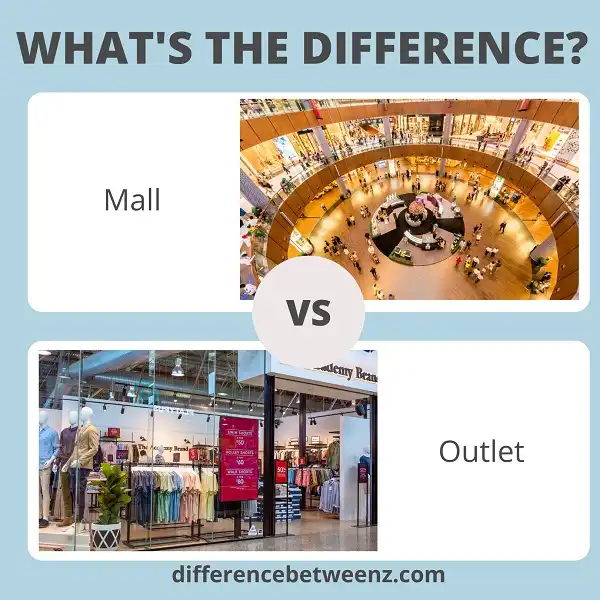As the holiday shopping season quickly approaches, consumers may be wondering where to find the best deals. Some may opt for the traditional mall experience, while others may choose to visit an outlet store. What are the differences between these two types of stores, and which is right for you? Keep reading to find out!
What is Mall?
A mall is a large, often enclosed shopping area with multiple stores and businesses. Malls typically have a variety of stores and businesses, including restaurants, coffee shops, and department stores. Some malls also have movie theaters, game rooms, and other entertainment options. Malls are usually located in busy, urban areas with high foot traffic. They are often surrounded by parking lots to accommodate the large number of shoppers. Mall hours and days of operation vary, but most are open seven days a week.
What is Outlet?
Outlet is a type of shopping center that typically contains a collection of stores that offer reduced prices on branded items. Outlet stores are often operated by the brands themselves or by retailers authorized to sell the brands’ overstocked or end-of-season items. Outlet malls, which are larger centers that may also include non-outlet stores, are another type of outlet. Outlet shopping is a popular activity among bargain hunters and savvy shoppers looking for deals on high-quality merchandise. While some shoppers view outlet stores as an alternative to traditional retail, others see them as a complement, providing an opportunity to purchase items at a discount. Whatever the case, outlets provide a unique and convenient shopping experience that continues to grow in popularity.
Difference between Malls and Outlets
Malls and outlets are both types of shopping centers. Malls typically have a mix of stores, including both high-end and low-end retailers, while outlets are typically composed exclusively of outlet stores. Outlet stores sell discounted merchandise, often last season’s items or items with minor defects. Malls also typically have a food court and may include entertainment options such as movie theaters. Malls are generally found in larger cities, while outlets are more likely to be located in suburban areas. Malls tend to attract more shoppers on weekends, while outlets may see more weekday traffic from bargain hunters.
Conclusion
The next time you’re out shopping, keep in mind the difference between malls and outlets. If you know what to expect, you can save yourself time (and money) by heading to the right place for your needs.


